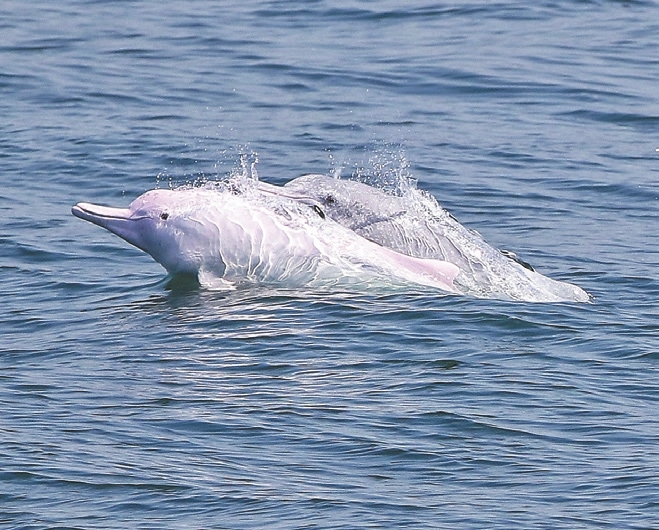
When people refer to a city’s biodiversity, they will look at those species that can be found within the boundaries of the town. We frequently refer only to terrestrial animals and plants and seldom turn our eyes to aquatic ecosystems. In fact, every single marine species that inhabits the continental platform of our coastal city is considered a part of Shenzhen’s biodiversity. Such is the case of the astonishing and unique Indo-Pacific humpback dolphin (Sousa chinensis), a first-class protected species in China that swims in the waters off the coast of Shenzhen. This beautiful mammal has white, gray, and pink colorations over the body with a diverse pattern range; the pink is caused by overdevelopment of blood vessels, while the white and gray are the result of an absence or presence of pigment cells. The Chinese white dolphins, as they are popularly called in China, can grow up to 3 meters, with some individuals reportedly having reached 3.5 meters or more. Their youngsters have an average length of only 1 meter and can be distinguished from adults by their darker coloration. Dolphins are mammals, and have developed lungs to obtain oxygen from the atmosphere. They must surface to breathe before returning to the underwater world. They can spend about 8 minutes under water without breathing, before surfacing again to refresh their air supply. These dolphins are usually observed in small groups of up to 10 individuals that hunt together using self-generated sound waves under the water, similar to the way radars work. They feed mainly on different fish species but have been seen feeding on mollusks or crustaceans as well. Indo-Pacific humpback dolphins are listed on the International Union for Conservation of Nature (IUCN) list of threatened species. Their numbers are declining due to human activities including overfishing, pollution and habitat fragmentation. We need to take action as fast as we can to protect our coastal areas so that this fascinating species can survive and our future generations can enjoy their beauty as we do. | 
